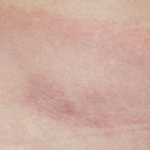In a study published online May 8, 2015, in Clinical Infectious Diseases, Vera Maraspin, MD, PhD, professor of infectious disease at the University Medical Center Ljubljana, Slovenia, and colleagues described their outcome data.4 They reported that even patients with Lyme disease with hematological malignancy (HM) in addition to EM had excellent outcomes following treatment with antibiotics. The investigators based their conclusion on data collected at a single European center over a period of 22 years.
The authors concluded, “Our study showed that antibiotic treatment approach as used in immunocompetent patients with EM is effective also in patients with underlying HM. The results apply to European regions with similar ratios of Borrelia genospecies causing EM as in Slovenia (80–90% B. afzelii, 5–15% B. garinii, <5% other Borrelia species) but may not entirely pertain to North America where LB [Lyme borreliosis] is caused by B. burgdorferi sensu stricto.” (posted 5/22/15)
Dr. Pullen is a medical writer based in the Chicago area.
References
1. Wormser GP, Weitzner E, McKenna D, et al. Long-term assessment of health-related quality of life in patients with culture-confirmed early lyme disease. Clin Infect Dis. 2015. Apr 17. pii: civ277. [Epub ahead of print].
2. Nowakowski J, Nadelman RB, Sell R, et al. Long-term follow-up of patients with culture-confirmed lyme disease. Am J Med. 2003. 115(2):91–96.
3. Wormser GP, Weitzner E, McKenna D, et al. Long-term assessment of fibromyalgia in patients with culture-confirmed lyme disease. Arthritis Rheumatol. 2014. 67(3):837–839.
4. Maraspin V, Ružić-Sabljić E, Lusa L, and Strle F. Course and outcome of early lyme borreliosis in patients with hematological malignancies. Clin Infect Dis. 2015. May 8. pii: civ341. [Epub ahead of print].



